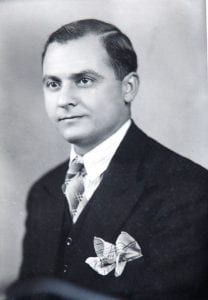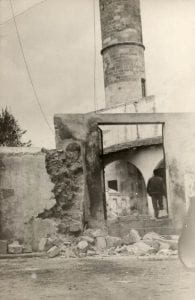Paphos Archives
I embarked on this project with the aim to practise the whole process of digital curation in a micro level. I wanted to investigate and learn how to think about and apply the curation lifecycle of a small set of photographic objects, before attempting to engage with collections or large-scale data. Additionally, I am personally invested in the objects I chose to practise on.
My digital object(s) is a set of digitised historic photographs originating from the city of Paphos in Cyprus.
The material was collected as part of the project Paphos Archives that ran between 2016-2017 and in which I was involved as a volunteer. The project is currently inactive while the digitised material is in generic cloud storage and in a non-curated and unused state.
The present blog is what I have learned in trying to work following the DCC Curation Lifecycle Model, the OAIS reference model and the standards, practices and resources we discussed and utilised during the module.
Project specific parameters
I was granted access to the material online as it is saved on Amazon cloud storage. I’m not aware of what happened to the physical objects or where they are currently kept. Since I only have digital access to them, I will treat them as simple digital objects, thus object and its digital representation overlap.
The images have various sources. The files are the result of digitised donations and a small part of the digitised archive of local photographer Spiros Charitou (the first professional photographer of the city) that lived between 1901-1991. His archive was found in the basement of his property/studio in a state of disarray and decomposition. There was a large volume of paper photographs and glass negative plates. What material could be salvaged was digitised in situ with high definition scanner with the permission of the legal owner of the site who is also the copyright owner of the content of the studio, the photographer’s nephew and beneficiary. The scanning did not comply to particular professional standards and digital preservation procedures as the volunteers who carried it through did not have any archival and conservation training at the time. The project participants were amateurs with an interest in the heritage of the city assisting the legal owner in attempting to salvage what was still possible among the debris. No public institution or service took charge of the site or the project.
Sadly, very limited metadata is available for most photographs. Some unverified dating and person identification information was pieced together through oral testimony. While the collection was underway a Facebook page was created that exhibited photographs and gathered significant attention and support. Users approached the project with their own donations or information on the locations and people in the images. This social media channel was the only point of access, source of user outreach and user content creation.
In hindsight there are many things that could have been done differently with more knowledge or with resourcing expert assistance. However, it is indicative of the low awareness around the professions of archivist and record-keeper that we were not aware of how such training could be hugely beneficiary, or that expert advice could be sought.
What I took from this experience is the urgent need to develop such practice, to create awareness and to push for the urgent digitisation of cultural heritage before any further irretrievable loses.
What I also understood well is the practical side of recordkeeping and the urgency you often encounter in trying to collect and preserve before any theoretical grounding, survey or long-term design is possible.
While considerations of long-term storage, preservation and uses of what was collected were absent in those circumstances, it did provide a learning opportunity by trial and error. From the point of view of today, with all the archival knowledge I have so far acquired, engaging once more with this project is still a useful lesson on the realities on the ground.
This blog is the digital revamping of Paphos Archives and an exploration of how it could continue in the future.

